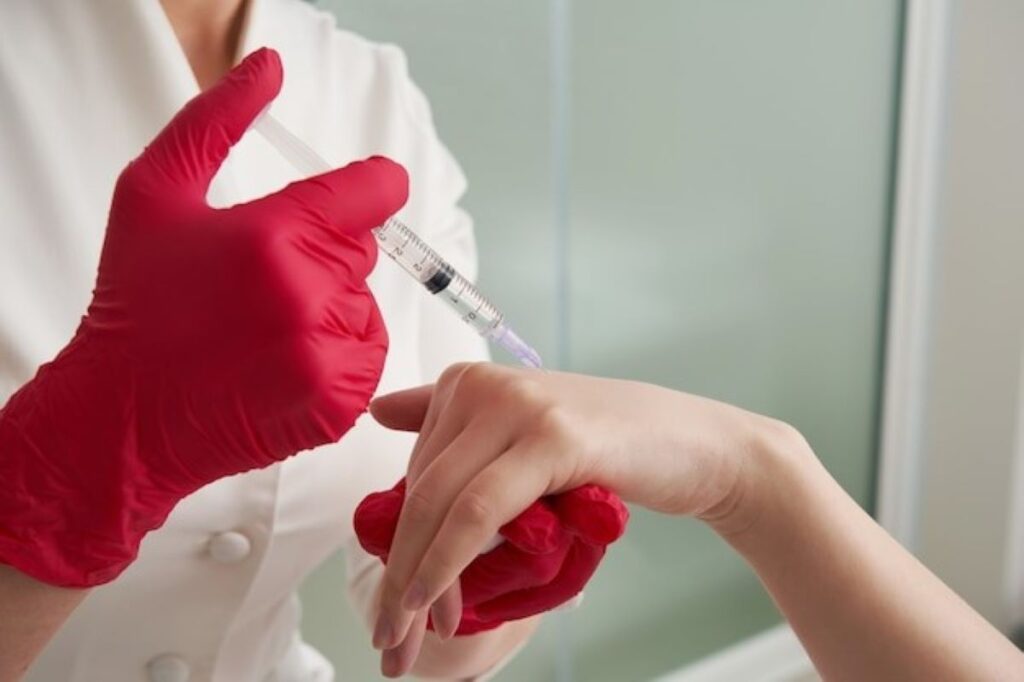Orthobiologics and It’s Impact On Non-Surgical Orthopedic Treatments
Orthobiologics, a phrase derived from the words “orthopedic” and “biologics,” is a branch of medicine that uses natural biological components to improve the body’s healing processes during orthopedic therapies. Historically, orthopedic injuries and chronic joint disorders were treated with surgery, physical therapy, or medication. However, in recent years, orthobiologics has emerged as a viable alternative for people looking for less intrusive treatments. These treatments use the body’s own cells, proteins, and other natural substances to promote tissue regeneration, reduce inflammation, and speed up healing, significantly transforming non-surgical orthopedic treatments.
In this blog, Jaslok Hospital, the best Orthobiologics treatment Clinic in Mumbai, will look at the various types of orthobiologics, how they operate, what they’re used for, and how they’re influencing the future of orthopedic medicine.
What is Orthobiologics?
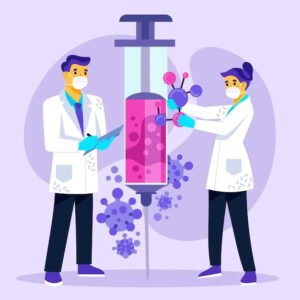
Orthobiologics are biological substances derived from the patient’s own body or from other naturally occurring sources. These include cells, growth factors, and tissues that help the body repair naturally. Best Orthobiologics Treatment in mumbai aim to improve tissue repair and regeneration, making them suitable for musculoskeletal injuries and disorders such as osteoarthritis, ligament tears, and tendon injuries.
Orthobiologics have been studied by the Best Doctors for Orthobiologics treatment in mumbai for many years, and advances in biotechnology have propelled them to the forefront of orthopedic treatment. These treatments have demonstrated encouraging results in improving healing outcomes, shortening recovery periods, and providing effective pain relief without the need for surgery.
Types of Orthobiologic Treatments
Orthobiologics encompasses various Best Orthobiologics Treatment in mumbai, each with its own distinct therapeutic characteristics and applications. The following are some of the most common and widely used orthobiologic options:
a) Platelet-rich plasma (PRP) Therapy
Platelet-Rich Plasma (PRP) therapy is removing a tiny amount of a patient’s blood, processing it to concentrate platelets, and injecting it into the wounded area. Platelets include growth factors, which help with tissue repair and stimulate the body’s healing processes. PRP is widely utilized to treat soft tissue injuries, tendinitis, ligament sprains, and joint inflammation.
b) Stem Cell Therapy
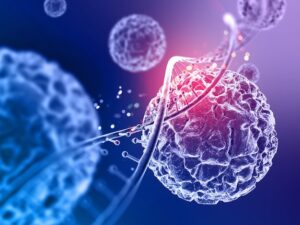
Stem cells are remarkable in that they have the ability to differentiate into a variety of cells in the body, including muscle, bone, cartilage, and tendon cells. In stem cell therapy, cells are normally extracted from the patient’s own bone marrow or adipose (fat) tissue and injected into the afflicted region. Stem cell therapy is becoming increasingly popular among the Best Doctors for Orthobiologics treatment in Mumbai for treating chronic illnesses like osteoarthritis, joint degeneration, and tendon injuries.
c) Hyaluronic Acid Injections
Hyaluronic acid is a natural component of joint fluid that helps to lubricate the joints and reduce friction between bones. Hyaluronic acid injections can be used to restore joint lubrication, relieve discomfort, and enhance mobility in patients suffering from osteoarthritis or other degenerative joint disorders. Best Orthobiologics Treatment in Mumbai is especially beneficial for knee and hip joints, where osteoarthritis can cause substantial pain.
d) Bone Marrow Aspirate Concentrate (BMAC)
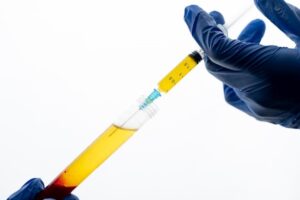
BMAC entails collecting bone marrow from the patient, usually from the hip bone, and processing it to concentrate stem cells and growth factors. The concentrated solution is then injected into the damaged area. BMAC is generally used to treat cartilage damage, bone fractures, and other serious musculoskeletal conditions.
e) Amniotic Membrane-Derived Products
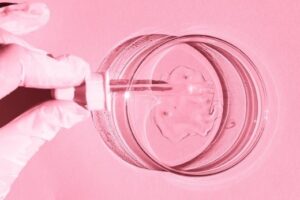
Amniotic membrane-derived products, generated from the amniotic sac, are rich in growth factors and anti-inflammatory proteins. These products are used to heal wounds, reduce inflammation, and promote tissue regeneration, often when conventional therapies have failed to produce the intended outcomes.
How Orthobiologics Work: The Science Behind the Healing
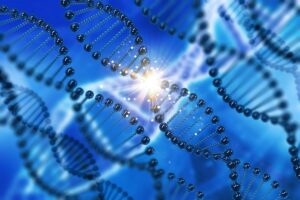
Orthobiologics utilize the body’s natural healing mechanisms, making them an appealing option for regenerative medicine at the Best Orthobiologics Treatment Hospital in Mumbai. Here’s how these therapies work:
1. Stimulating Tissue Regeneration
Orthobiologics, such as PRP and stem cells, produce growth factors that promote cellular regeneration. PRP, for example, is made up of concentrated platelets that release growth factors, which stimulate collagen formation and encourage cells to mend injured tissues.
2. Reducing Inflammation
Inflammation is a prevalent symptom of many orthopedic disorders, and orthobiologics attempt to reduce it. Anti-inflammatory proteins included in treatments such as PRP and amniotic membrane-derived products can reduce swelling and pain, offering respite to the patient while also encouraging a better healing environment.
3. Promoting Collagen Production
Collagen is vital for joint and tendon health. Orthobiologic therapies, notably PRP, increase collagen formation, which strengthens tendons and ligaments, thereby stabilizing joints and lowering the risk of re-injury.
Key Benefits of Orthobiologics in Non-Surgical Treatments
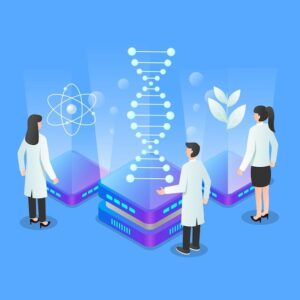
The growing popularity of orthobiologic therapy in orthopedic care at the Best Orthobiologics Treatment Hospital in mumbai is mostly due to the advantages they provide. Here are some of the major benefits:
a) Minimally Invasive
Orthobiologic treatments are non-surgical and therefore minimally invasive. This lowers the risk of surgical complications such as infections and anesthesia-related hazards. Patients can often receive these therapies in an outpatient environment and return home the same day.
b) Faster Recovery Times
Orthobiologic treatments often result in faster recovery times than traditional surgical procedures because they promote the body’s natural healing processes. This is especially useful for athletes or others who need to resume their regular activities as soon as feasible.
c) Pain Reduction and Long-Lasting Relief
Orthobiologics offer a natural way to relieve pain by addressing the underlying source of discomfort rather than simply concealing symptoms. As a result, patients frequently report long-term alleviation, particularly in chronic illnesses such as osteoarthritis.
d) Fewer Side Effects
Most orthobiologic treatments involve cells or chemicals from the patient’s own body, therefore there is a lower danger of unpleasant responses or consequences. This also implies that these medicines are generally well tolerated and appropriate for a broader variety of patients.
Applications of Orthobiologics in Orthopedic Conditions
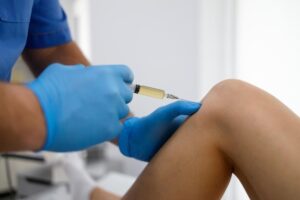
Orthobiologics are used to treat a variety of orthopedic ailments, including acute injuries and chronic degenerative illnesses. Some common applications are:
a) Osteoarthritis
PRP and stem cell therapy are commonly utilized to treat osteoarthritis. These treatments aid in repairing joint tissue, lowering inflammation, and improving mobility in patients with this degenerative condition.
b) Tendon Injuries
Orthobiologics are particularly effective in treating tendon ailments such as tennis elbow, Achilles tendinitis, and rotator cuff tears. PRP and stem cell injections help to mend damaged tendons, reduce recovery time, and lower the chance of re-injury.
c) Ligament Tears
Orthobiologics can be used in conjunction with physical therapy to treat ligament problems like ACL or MCL rupture. Injecting PRP or stem cells into the damaged ligament can speed up the healing process and increase overall ligament strength.
d) Cartilage Injuries
Cartilage injuries are notoriously difficult to cure because cartilage tissue has a limited blood supply. BMAC and stem cell therapy have showed promise in cartilage regeneration, making them viable alternatives to surgery in patients with cartilage loss or degradation.
Challenges and Limitations of Orthobiologics
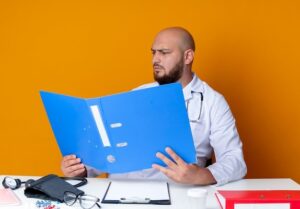
While orthobiologics show great promise, there are certain obstacles and constraints to consider:
a) Limited Research and Standardization
Although orthobiologics have grown in popularity, there is still a lack of systematic research on their long-term effectiveness. More clinical trials are required to evaluate the efficacy of these treatments and develop uniform methodologies.
b) Cost
Orthobiologic therapies are expensive, and insurance coverage may be limited. This can make them inaccessible to some patients, despite the fact that they provide an excellent, non-surgical treatment for orthopedic disorders.
c) Variable Results
The outcomes of orthobiologic therapy might vary greatly from person to person, depending on factors such as age, overall health, and the degree of the damage. Not all patients have the same level of improvement, which might lead to unexpected results.
The Future of Orthobiologics in Orthopedics
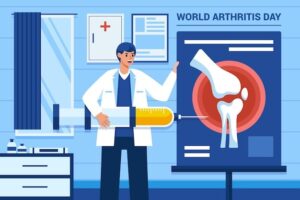
As research advances, orthobiologics are projected to play an increasingly important role in orthopedic therapy. Innovations in regenerative medicine and biotechnology are creating new opportunities to improve the efficacy of these medicines. For example, researchers are investigating the potential of gene therapy paired with orthobiologics to improve healing results and give more personalized treatments for specific patients.
In the future, orthobiologics may provide viable alternatives to many orthopedic operations, particularly for people with degenerative diseases or chronic injuries who want minimally invasive treatment.
Related: Platelet-Rich Plasma (PRP) vs. Hyaluronic Acid Injections for Knee Osteoarthritis Management
Orthobiologics represents a transformative shift in orthopedic medicine, offering non-surgical solutions that utilize the body’s natural healing mechanisms. With treatments like PRP, stem cell therapy, and hyaluronic acid injections, patients now have access to effective, minimally invasive options for managing musculoskeletal conditions and injuries. Despite some challenges, the benefits of orthobiologics—such as pain relief, faster recovery, and reduced risks—make them a promising alternative for many individuals. As technology and research progress, orthobiologics will likely become even more accessible and refined, ultimately shaping the future of non-surgical orthopedic treatments.
Incorporating cutting-edge treatments like orthobiologics, Jaslok Hospital, the best orthobiologics treatment Clinic in Mumbai, stands at the forefront of orthopedic care, offering patients innovative, non-surgical solutions for faster recovery and long-lasting relief. With a team of highly skilled specialists, Jaslok Hospital ensures the best possible outcomes for those seeking advanced orthopedic treatments.

